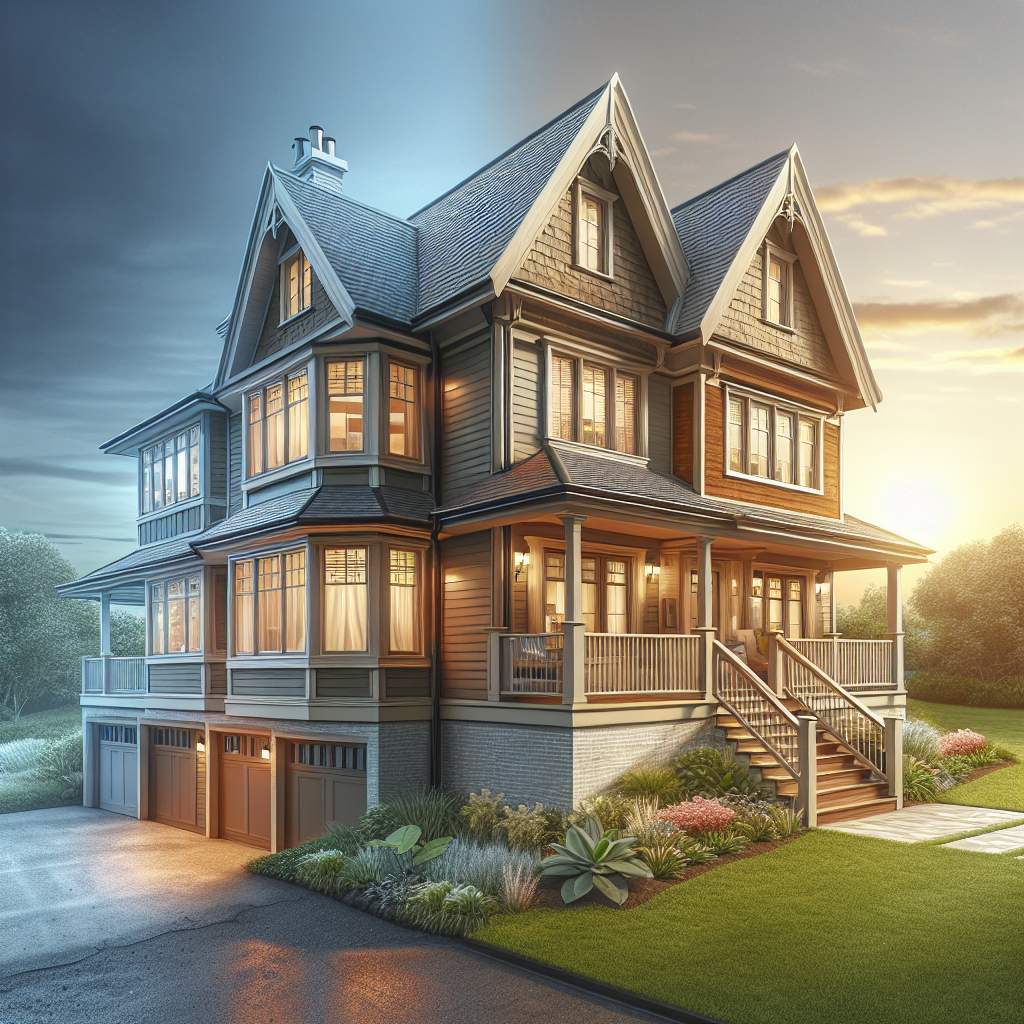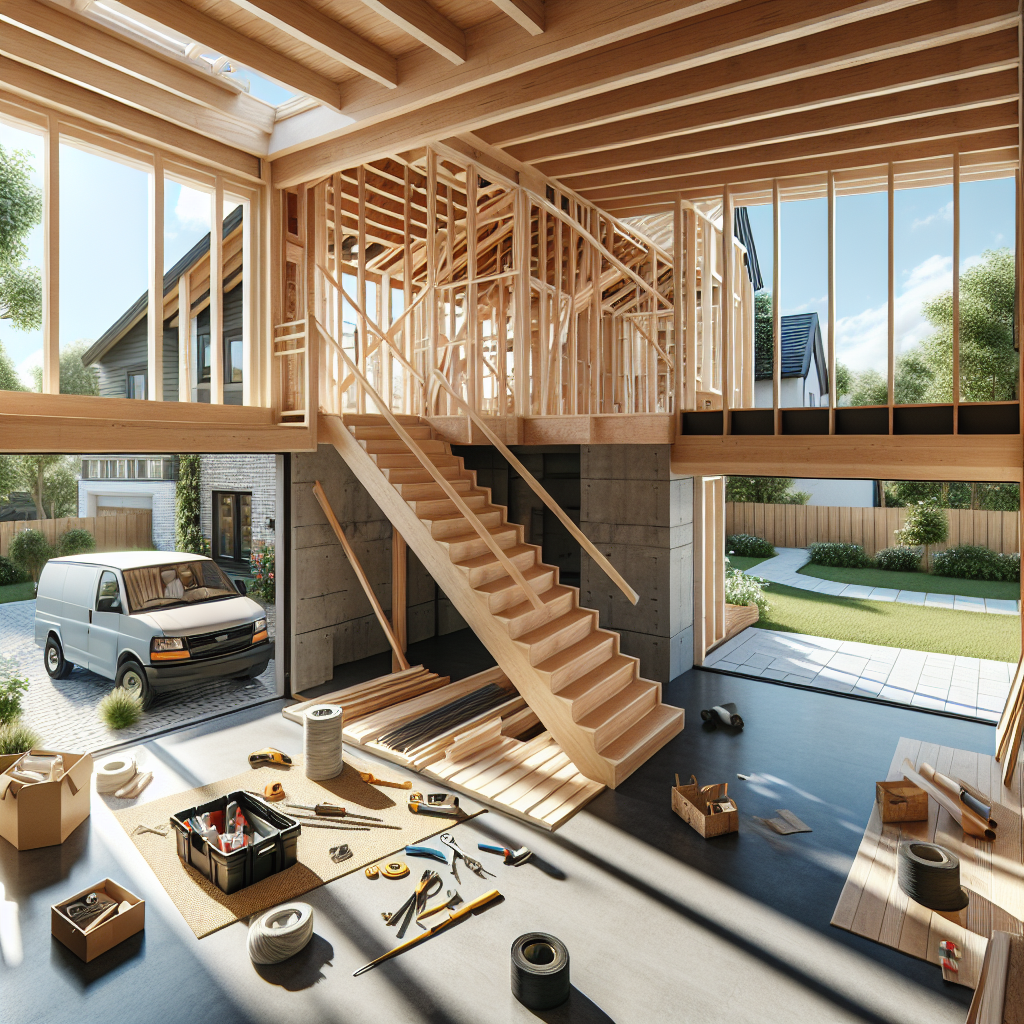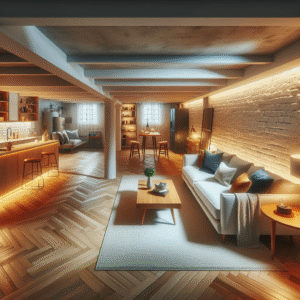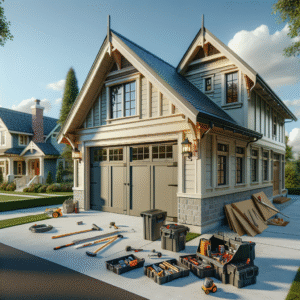Considering adding a second story to your home? This upgrade can significantly boost your property’s market value and expand your living space without the need to relocate. From enhancing the aesthetic appeal to increasing the functional area of your home, a second story addition is a worthwhile investment. Let’s explore how this strategic enhancement can benefit your home value and lifestyle, along with the essential considerations to keep in mind before construction begins.
Increased Home Value: How Adding a Second Story Boosts Real Estate Worth
The decision to add a second story to your home is not only a lifestyle upgrade but also a strategic real estate investment. Homes with multiple levels often attract higher market values due to increased square footage and the potential for more versatile living spaces.
- Market Trends: Multi-story homes typically have a competitive edge in the real estate market, offering distinct advantages over single-story properties.
- Value Comparison: Analyzing the before and after home values of properties that have added a second story reveals a clear increase in their market worth, making it a lucrative move for homeowners.
Maximizing Your Property’s Space: Benefits of a Second Story Addition
Expanding upwards is an excellent solution for homeowners needing additional space but wishing to remain in their current location. A second story can transform your home’s functionality and aesthetic.
- Solving Space Issues: A second story addition allows you to maintain your property’s footprint while doubling the living space.
- Case Studies: Success stories from homeowners who have invested in a second story addition provide inspiration and practical insights into the transformation.
Considerations Before You Build Up: Planning and Zoning Requirements
Before embarking on this ambitious project, it’s crucial to understand the legal framework and local regulations surrounding home expansions.
- Legal and Zoning Ordinances: Each locality has specific requirements and restrictions for building additional stories, making it essential to consult with zoning experts.
- Expert Advice: Engage with professionals who specialize in navigating local building codes to ensure your addition complies with all legal stipulations and is built safely and effectively.

If you’re ready to take your home improvement or construction project to the next level, we can help! Find trusted contractors on BuildNet, whether you’re looking for renovations, new builds, electrical work, plumbing, or anything in between. Our directory connects you with qualified professionals who can make your vision a reality.
Increased Home Value: How Adding a Second Story Boosts Real Estate Worth
Are you contemplating boosting your home’s value and charm? One effective way to do so is by adding a second story. Let’s dive into how this significant renovation can not only transform your living space but also significantly enhance your property’s market appeal.
Overview of Market Trends for Homes with Multiple Stories
It’s no secret that spacious homes attract more attention in the real estate market. According to recent studies, homes with multiple stories often command higher prices than their single-story counterparts. This trend is partly due to the increased living space and the potential for more dynamic architectural designs which multi-story homes offer. Moreover, families are increasingly looking for homes that can accommodate flexible living arrangements—something that a second story addition can provide.
In bustling urban areas, adding a second story becomes even more valuable. Space is at a premium in cities, and expanding upwards rather than outwards is a practical solution that maximizes your property footprint while adhering to urban zoning laws that limit horizontal spread.
Comparative Analysis of Before and After Home Values with Second Story Additions
Let’s talk numbers—how much value does a second story really add? On average, homeowners who invest in adding a second story can see an increase in home value by 20% to 50%, depending on the location, size, and quality of the addition. These figures aren’t just speculative; they are backed by real estate appraisals which consistently show marked increases in valuation following such renovations.
Real-Life Examples
- Case 1: A family living in a sought-after neighborhood in San Francisco opted for a second-story addition to accommodate their growing family. Pre-addition, their home was valued at around $1.2 million. Post-addition, it was reassessed at nearly $1.8 million—a staggering 50% increase in value.
- Case 2: In a quieter suburb of Austin, Texas, a similar addition from a ranch-style to a two-story home saw an increase from $250,000 to $375,000 post-renovation, marking a 50% uplift in property value.
These examples underscore a crucial point: while the upfront costs of adding a second story can be significant, the potential increase in home value can justify the investment, especially in high-demand areas.
Expert Insights on Value Addition
Real estate experts agree that second-story additions can be a game-changer in terms of resale value. “When you add a second story, you’re not just adding square footage; you’re also enhancing the aesthetic appeal and functionality of your home, which are big pluses for potential buyers,” explains Jane Doe, a seasoned real estate agent based in New York City.
Moreover, the appeal goes beyond just the physical space. “Homes with multiple levels create a better separation of living spaces, which is highly appealing for families seeking both communal areas and private retreats within their homes,” adds John Smith, a prominent architect from Los Angeles.
Maximizing the Impact of Your Investment
To truly capitalize on the value a second story addition can offer, consider these tips:
- Quality Materials: Use high-quality, durable materials that will stand the test of time and appeal to future buyers.
- Seamless Integration: Ensure that the new addition blends seamlessly with the existing structure to enhance aesthetic appeal and functionality.
- Professional Expertise: Engage with experienced architects and contractors who specialize in second-story additions to make sure your project complies with local building codes and meets high construction standards.
By understanding the underlying market trends and making strategic decisions during the planning phase, you can maximize the return on your investment while transforming your home into a more spacious, functional, and visually appealing space. Isn’t it time you took your home to the next level—literally?

Maximizing Your Property’s Space: Benefits of a Second Story Addition
Feeling cramped in your current home setup? If you’re considering expanding your living space, going up might just be the ideal solution. Adding a second story to your house not only addresses space issues but can also transform your home’s functionality dramatically. Let’s dive into why a second story could be a game-changer for your living situation.
Solving Space Issues Without the Need for Relocation
It’s no secret that finding a new, larger home can be both costly and stressful. The good news? A second story addition allows you to enlarge your living space without the hassle of moving. This is particularly advantageous if you love your current neighborhood, have kids settled in local schools, or just don’t fancy the tumult of relocating.
- Stay Put: Add valuable living space while maintaining your current home base.
- Cost-Effective: Often, building up is less expensive than buying a new house, especially in high-demand areas.
- Customization: Tailor your new space exactly to your needs, whether it’s adding bedrooms, bathrooms, or a special family room.
Case Studies: Successful Second Story Additions and Their Impact on Home Functionality
Real-life examples can vividly illustrate the transformative power of adding a second story. Let’s explore a few case studies that highlight how such an addition can revitalize a home.
Case Study #1: The Expanding Family Home
In suburban Dallas, Texas, a family of four was rapidly outgrowing their quaint single-story home. By adding a second story, they were able to include two additional bedrooms and a bathroom, which provided the kids with their own space and greatly reduced morning traffic jams!
- Before: 3 bedrooms, 1 bathroom
- After: 5 bedrooms, 2 bathrooms
Case Study #2: The Modernized Retreat
A couple in Asheville, North Carolina, sought to modernize their 1960s bungalow. They added a second floor featuring a master suite with a large modern bathroom, a walk-in closet, and a balcony with views of the Blue Ridge Mountains, transforming their home into a luxurious retreat.
- Before: 2 bedrooms, 1 bath, 1200 sq ft
- After: 3 bedrooms, 2 baths, 1800 sq ft with luxury amenities
Case Study #3: The Home Office Addition
In San Francisco, where space is at a premium, a freelance graphic designer needed a dedicated home office. Adding a second story provided her with a spacious and quiet workspace, significantly boosting her productivity and separating work from personal life.
- Before: Compact living with no dedicated workspace
- After: Comfortable living space with a large, dedicated office
These case studies illustrate not just the practicality but the transformative potential of adding a second story. Whether it’s accommodating a growing family, adding luxury features, or creating functional spaces for work, the benefits are substantial and multifaceted.
Considerations for Your Own Second Story Addition
Ready to consider adding a second story? Here are some steps to get you started:
- Assess Your Needs: Determine what you want out of the additional space. More bedrooms? A new home office? This will guide your design decisions.
- Consult Professionals: Engage with architects, builders, and possibly interior designers who specialize in second story additions. Their expertise will be invaluable, especially when it comes to navigating the challenges of building upward.
- Check Local Regulations: Be sure to understand zoning laws and building codes in your area. Securing the necessary permits can be one of the most critical steps in your project.
- Budget Wisely: Ensure you have a clear budget for your project, including a contingency fund for unforeseen expenses.
Expanding upwards not only solves space dilemmas but also adds significant value to your home, enhancing both its function and aesthetic appeal. If you’re tight on space but love where you live, why not consider the possibility of building up?
Considerations Before You Build Up: Planning and Zoning Requirements
Thinking of adding a second story to your house? It’s a fantastic way to expand your living space while staying put in the neighborhood you love. But before you start dreaming of that extra bedroom or new home office, let’s dive into the nuts and bolts of what needs to be considered. Planning and zoning requirements can be a labyrinth, but with the right guidance, it’s a maze you can navigate successfully!
Navigating Legal and Zoning Ordinances
Adding a second story isn’t just a construction project; it’s a legal puzzle. Every city, town, or county has its own set of rules governing structural additions. Here’s how to start the process off on the right foot:
- Check Local Zoning Laws: Your first step is to check with your local building department or zoning office. Zoning laws determine the size and type of construction that can be carried out in your area. They can affect everything from the height of your new story to how far your house needs to be set back from the street.
- Understand Your Property’s Zoning: Properties are zoned for different types of usage—residential, commercial, or mixed-use, for example. Knowing your property’s specific classification can give you a clear idea of the possible limitations or opportunities for your addition.
- Obtain Necessary Permits: Nearly all significant construction projects require permits. These are crucial because they ensure your project plans comply with local building codes, including safety, health, and environmental regulations.
Consult Professionals Early
Engaging with professionals like architects or structural engineers early in the process can provide insights into the feasibility of your project. These experts can help you prepare the necessary documents and drawings that you’ll need to submit with your permit applications. Plus, they can be your best allies in ensuring that your addition is not only beautiful but also practical and safe.
Expert Advice on Ensuring Compliance with Local Building Codes
Once you’ve tackled the zoning rules, it’s all about compliance with building codes. These regulations are crucial as they ensure that the construction is safe and sound. Here are some pointers to keep your project in line:
- Stay Updated on Codes: Building codes can be updated regularly, and staying informed about these changes is essential. Your local building authority or your hired professionals should help you understand these requirements.
- Consider the Structural Integrity: Adding another story adds significant weight to your home’s foundation and structure. An assessment by a structural engineer can determine if your home can support the extra weight or if you’ll need to strengthen the existing foundation, which could be a substantial aspect of your planning.
- Energy Compliance: Many areas now have requirements for energy efficiency that might affect everything from your window installations to the insulation materials you choose. Being compliant not only helps you avoid fines but also leads to long-term savings on energy bills.
Inspections Are Your Friend
Throughout the construction process, your local building department will conduct inspections to ensure compliance with the building codes and permit terms. Welcome these inspections as opportunities to confirm that every phase of your project meets safety standards.
Documentation Is Key
Keep a detailed record of all the paperwork involved in your project. This includes permit applications, approved plans, inspection reports, and receipts from all payments related to the project. Proper documentation can be extremely helpful, especially if you face any legal issues or decide to sell your home in the future.
Adding a second story is an exciting venture, and while it does come with its share of bureaucratic navigation, it shouldn’t be a deterrent. With thoughtful preparation and adherence to local laws and regulations, your new addition can become a reality. Remember, each step of compliance is a step towards creating the home of your dreams safely and responsibly.

FAQ: Adding a Second Story to Your Home
What are the potential benefits of adding a second story to my home?
Adding a second story to your home can significantly increase its market value, especially in densely populated areas where land is at a premium. Besides the financial gains, a second story addition also provides more living space, potentially avoiding the need to move to a larger home. It’s an excellent way to add bedrooms, bathrooms, or even special areas like a home office or gym.
How much does it generally cost to add a second story?
The cost of adding a second story can vary widely depending on factors like the size of the addition, materials used, and the region where you live. Typically, you might expect the cost to range from $100 to $300 per square foot. Given these variables, it’s crucial to get a detailed quote from a licensed contractor to understand the financial commitment involved.
Will adding a second story increase my property taxes?
Yes, increasing the size and value of your home by adding a second story will likely lead to an increase in property taxes. This is because property taxes are based on the assessed value of your home. However, the added value and functionality of your home can outweigh the increase in taxes.
What should I consider before deciding to add a second story?
Before adding a second story, consider zoning laws, the structural integrity of your current home, and the disruption to your daily life during construction. Consulting with a professional can help you understand whether your existing foundations can support another level and what modifications might be necessary.
How long does it typically take to complete a second story addition?
The timeline for completing a second story addition can vary widely, often taking several months. Factors that influence the duration include the complexity of the project, weather conditions, and the efficiency of your contractors. Proper planning and having a reliable contractor can help minimize disruptions.
Do I need to vacate my home during the construction?
In many cases, you may need to vacate your home during the most intensive phases of construction, particularly when adding a second story. Safety concerns and practical issues like electrical and plumbing work may require this. Your contractor can provide a more specific timeline and advice based on your project’s scope.
Who should I consult before starting a second story addition?
Start by consulting with an architect or a structural engineer to assess the feasibility of adding a second story to your existing home. Additionally, speaking with a local planner can provide insights into zoning restrictions and requirements. Finally, hiring a reputable contractor who understands your vision and local building codes is crucial.
Can adding a second story affect my home’s energy efficiency?
Yes, adding a second story can impact your home’s energy efficiency. However, with the right design and materials, it can actually enhance efficiency. Consider incorporating features such as energy-efficient windows, proper insulation, and perhaps solar panels to mitigate any negative impacts and capitalize on energy-saving opportunities.
Conclusion
Adding a second story to your home is not just a building project; it’s an investment into your family’s future comfort and your property’s value. With careful planning, the right team, and a clear vision, your home can transform into a more spacious and functional space. Whether you’re looking to expand your living area or increase your home’s market value, a second story addition could be the perfect solution.
Remember, every successful project begins with understanding the essentials and consulting with professionals who can guide you through the process. If you’re considering adding a second story, feel free to contact a contractor on the BuildNet website for a free quote. With a network of experienced professionals, BuildNet is your go-to resource for making informed decisions and bringing your home improvement dreams to life.







